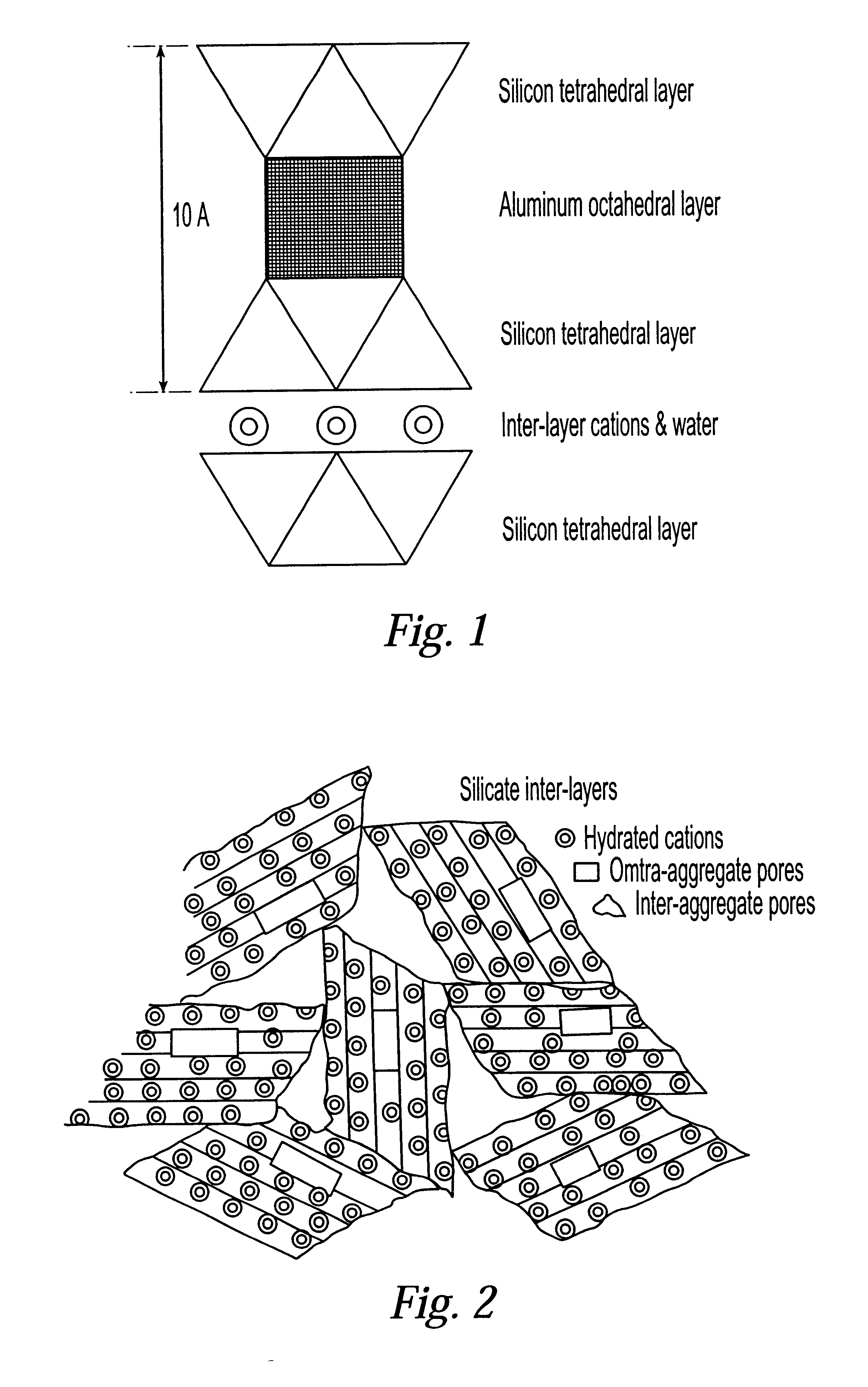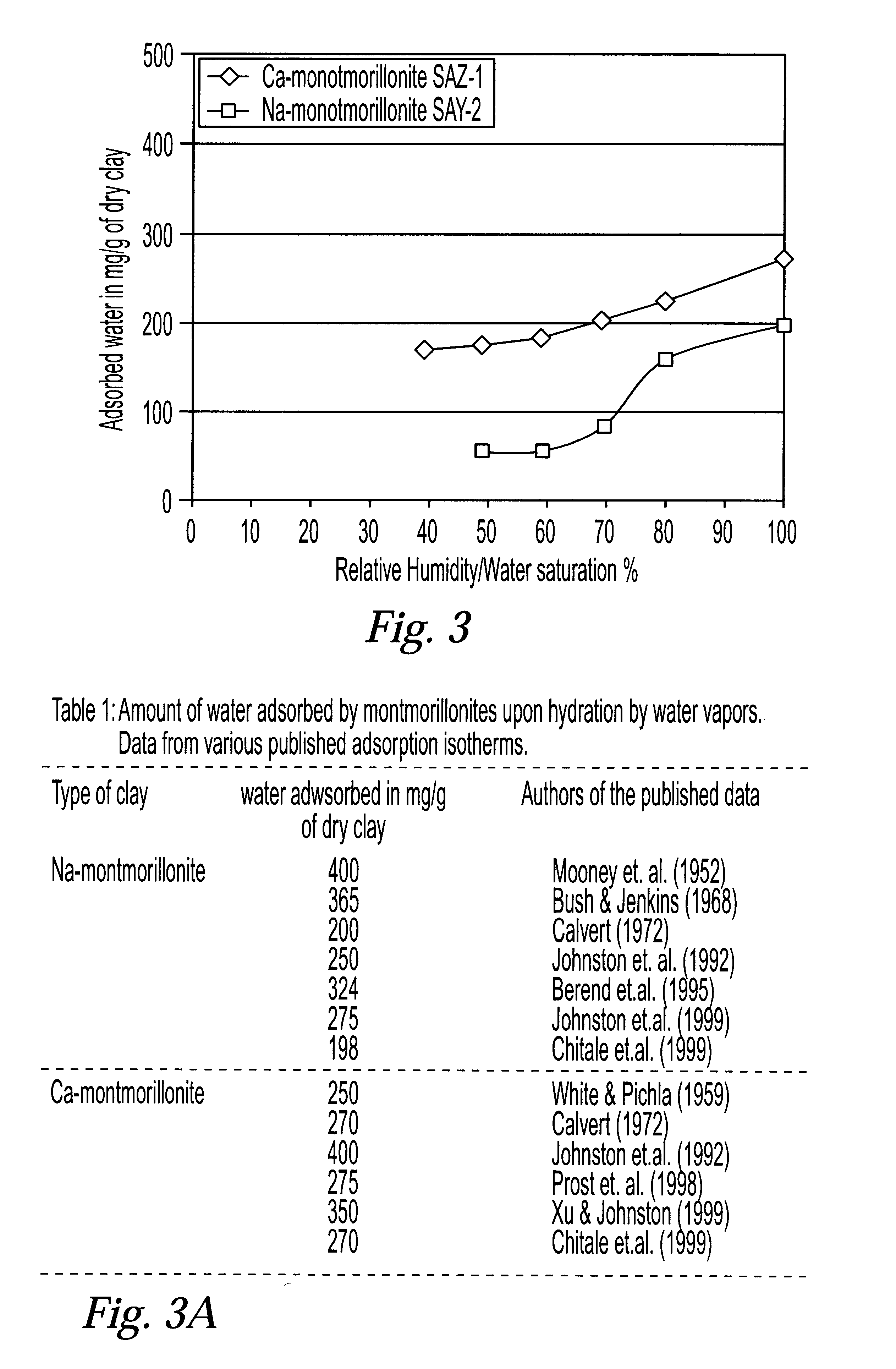System and method for clay typing using NMR-based porosity modeling
a porosity modeling and clay typing technology, applied in the field of formation analysis, can solve the problems of remained unclear whether or not water is adsorption on the clay surface, and achieve the effect of improving estimates
- Summary
- Abstract
- Description
- Claims
- Application Information
AI Technical Summary
Benefits of technology
Problems solved by technology
Method used
Image
Examples
Embodiment Construction
NMR Characterization of the Water Adsorbed by Clays
Hydration of Clays
Understanding the mechanism of water retention by clays is essential in modeling the petrophysical parameters for these clays. The clay-water interface has been studied extensively during the last 50 years by clay researchers from agronomy, soil science and geology. Excellent reviews on many aspects of the clay-water interactions are available, for example, from Van Olphen (1965), Grim (1968), Prost (1976), Sposito and Prost (1982), Low (1980), Guven (1992) and Prost et.al.(1998), which publications are incorporated by reference for background. Pertinent aspects of the hydration of an important class of clays, the smectide group which includes montmorillonite, are summarized below.
Water associated with clays has two components: water that is adsorbed on the clay surface, and water that occupies the inter-aggregate clay pores. The adsorbed water is either coordinated to the exchangeable cations--that are known as hy...
PUM
 Login to View More
Login to View More Abstract
Description
Claims
Application Information
 Login to View More
Login to View More - R&D
- Intellectual Property
- Life Sciences
- Materials
- Tech Scout
- Unparalleled Data Quality
- Higher Quality Content
- 60% Fewer Hallucinations
Browse by: Latest US Patents, China's latest patents, Technical Efficacy Thesaurus, Application Domain, Technology Topic, Popular Technical Reports.
© 2025 PatSnap. All rights reserved.Legal|Privacy policy|Modern Slavery Act Transparency Statement|Sitemap|About US| Contact US: help@patsnap.com



